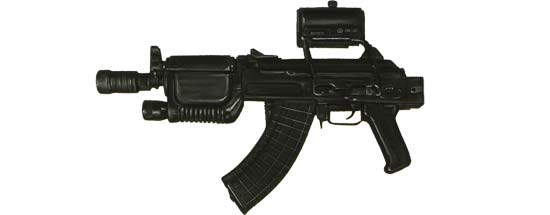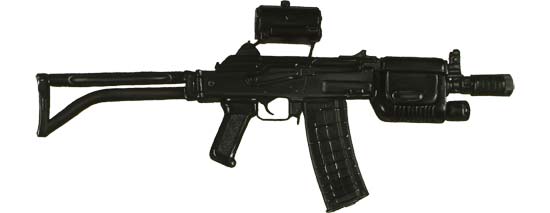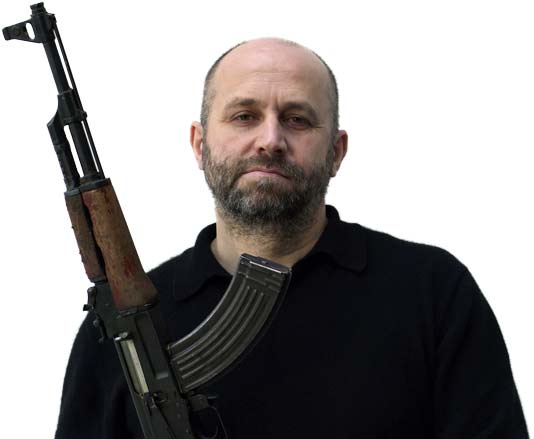Discussion (Property)
I came across this story in the summer of 2006. A newspaper article described the decade-long dispute - to put it mildly - between Russia and Bulgaria over Russia’s claim that Bulgaria’s continued manufacturing and selling of the AK-47 assault rifle was illegal. This notorious masterpiece of automatic weaponry was conceived by Mikhail Kalashnikov in the late 1940s, and in the socialist era the Soviet Union freely gave its permission, as well as all related technical documentation, to the People’s Republic of Bulgaria, so that the small satellite state could churn out AK-47s to satisfy intense Eastern Bloc demand.
Years later, socialism collapsed and capitalism took over. However, the AK-47 had never been the subject of an international patent application or legal transfer as an intellectual product. If it had been, M. Kalashnikov would have long ago become a billionaire as, according to available statistics to date, somewhere between 50,000,000 and 100,000,000 AK-47s have been marketed worldwide. So, when tough talks on the issue kicked off between Russia and Bulgaria in the 1990s, it was obvious things could not be settled in an international court.
It is now difficult to retrace the twists and turns of the negotiations and other related developments that followed. On the one hand, all meetings of the intergovernmental commissions were secret, and on the other, people like myself don’t usually go to gun show and so have not directly witnessed some of the more embarrassing rows, with Russians publicly telling Bulgarians off for exhibiting and selling stuff that belonged to them. However, during the last few years especially, Bulgarian manufacturers started to claim that they had switched production over to a different assault rifle named the AR that, despite its slight similarity to the AK-47, was entirely modernized in line with NATO standards and was selling very well indeed. For example, according to the Bulgarian press, a couple of years ago the American Central Command for Iraq decided to purchase 40,000 Bulgarian AR assault rifles to arm the new democratic Iraqi army.

That was more or less what I knew when I decided to approach the two sides and try to have them talk in front of the camera. As a first step I focused on the Bulgarian “A…l” factory, a producer of the rifles situated in the picturesque city of K. As an artist unconnected to the military who also lacks any contacts whatsoever with arms dealers, I asked the deputy minister of culture (a nice lady) to help put me in touch with the director-general of “A…l”, Mr. N.I. She phoned the deputy minister of defense (another nice lady) and I was promised a meeting. Since I am paranoid by nature, I also asked a well-known reporter (again a woman) to help.

So, on December 1, 2006, when I appeared before Mr. I. in his office, he started by saying: “The prime minister was the only one who didn’t call about you coming!” Nevertheless, it took me almost three hours to convince the director-general to say a few words on camera. Why? The main problem was that my attempt to get both sides to talk was simultaneously being pursued right in the middle of the last round of heavy negotiations between representatives of Russia and Bulgaria on the intellectual property of military items. Obviously Mr. I., a reasonable middle-aged man, didn’t want to jeopardize the entangled disputes by talking to an artist who, to his question: “But why do you - not a journalist - have an interest in this matter?!” gave a rather peculiar answer: “Because I’m used to reading about intellectual property disputes over a book or a musical score, but never over a weapon, reportedly the most popular of all time”. Eventually, Mr. I. agreed to my request and gave a one-minute interview. Then, off the record, he spoke for more than an hour about how he had studied in the Soviet Union and how he admired the quality of Russian military production. He also spoke about having worked in that “A…l” factory for decades, first as an engineer and later as director-general. His main concern now was how to sustain the jobs of his 5,500 employees, who also produce many civilian products such as CNC equipment.

After the interview, I went to the firm’s website and found a complete list of the assault rifles they were producing with photographs of each one. I requested a few better quality images to use in my project and, after a careful selection, the factory’s design department sent me a CD on December 19, 2006, with a dozen high-resolution samples partially covering their output of AR assault rifles. Unfortunately, the ones I most wanted were deemed “too controversial” to be used in the way I suggested, despite the fact they were publicly shown on the website. “We don’t want to piss the Russians off with your project, right?” said Mr. I. and I had to agree with him. I then hired two skilful young artists to make twelve life-size drawings of the AR rifles, using the less controversial images as a reference. It took the girls two months to finish the job.
Mr. I. was also kind enough to help me illustrate my point even better by arranging for me to buy two real but inoperative 1960s vintage AK-47s (one of them with a folded metal butt) at one of the biggest arms shops in Sofia. Unfortunately, the disarming technique carried out on these rifles - precisely described in the official certificate that came with them - was found unacceptable by the Italian authorities who mandated other disarming procedures for assault rifles. I had to then give up the idea of exporting the AK-47s and decided to buy one in Italy. Consequently here you see a Romanian made AK-47 that comes from an Italian shop and which has a weird additional handle, all of which I can live with.

Parallel to all this Bulgarian activity, I was desperately trying to make contact with the Russian side. On November 21, 2006, the same deputy minister of culture wrote an official letter to the Russian embassy in Sofia, requesting an appointment for me to discuss the issue with a government representative. I was in Miami when I got the bad news from the deputy minister that in a letter dated December 5, 2006, the Russian embassy had declined to set up a meeting for me. Later, back in Sofia, I addressed the same request to a high-ranking person (a lady again) from the Bulgarian Ministry of Foreign Affairs, also soliciting the help of a curator (yet another lady) working for the ministry. Politely and diplomatically, I was told about negotiations going on right then on the same subject and how such a letter focused on my own project would be deemed entirely inappropriate by the Russian embassy. “Can I mention in my story that you are anxious to approach the Russians?” I asked the Foreign Office lady. “I’d rather you didn’t”, was the answer.
I was then introduced to a successful businesswoman who was seriously involved with Russia and, in fact, had the right connections. She kindly took up my cause and finally managed to talk with the Russian ambassador about my project. Even though he didn’t refuse outright to help me, it was still not quite clear if I could really meet someone from their side. At last, thanks to a native Russian (another woman, of a quarter-Armenian descent who, as it happens, is also an international curator based in Bulgaria), the Armenian ambassador in Sofia had a word with the Russian ambassador whereupon a meeting with Mr. P. and Mr. V. from the Russian embassy took place at the latter’s premises on January 24, 2007.
Mr. P. and Mr. V. were both very kind and promised to supply me with a copy of a film broadcast on Russian TV in 2006 that addressed ‘the-Bulgarians-and-our-own-Russian-weapons’ subject. The two gentlemen also promised to try and arrange a meeting with a representative of the Russian “R…t” - the organization authorized to sell weapons internationally - who hopefully would not mind a chat with me about my project.
A few days ago, while standing-by in hope such a meeting, I read in the papers that the negotiations were apparently taking a turn for the better and that new terms that would please both parties were almost agreed.

I don’t know what arguments the two sides had offered to clear all the hurdles. If I can make an educated guess, they were probably more serious than: “Did the Russians ever obtain a license for using our Cyrillic alphabet over the centuries, which as everybody knows, was invented by the Bulgarian brothers Cyril and Methodius back in the ninth century, or for eating Lactobacillus Bulgaricus, the tiny bacteria that makes the best yoghurt?” So, after all those years of wrangling over property rights, I feel personally satisfied that, at least in the assault rifle sector of the international arms trade, there will finally be relative peace.
Nedko Solakov
February 2007
Edited by Charles Esche
